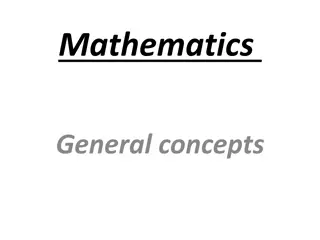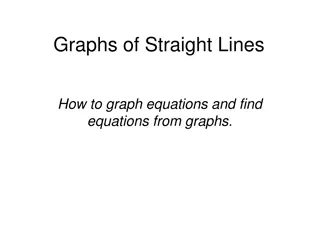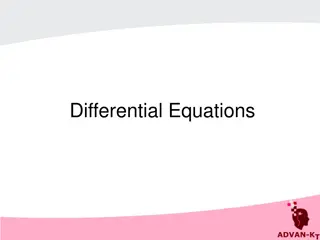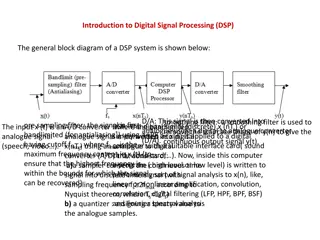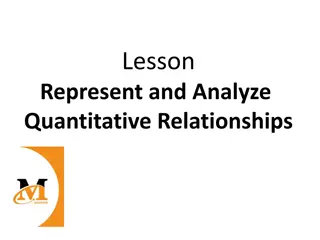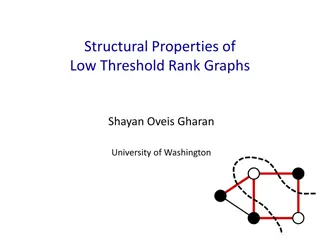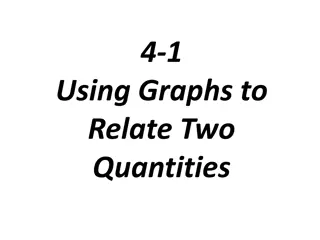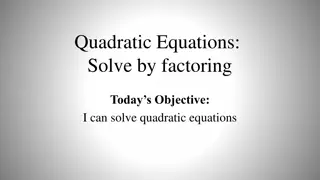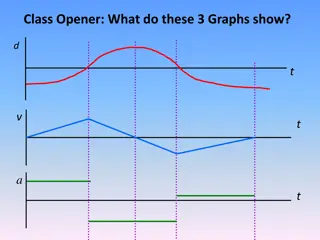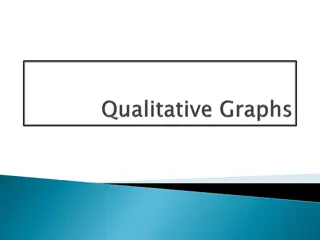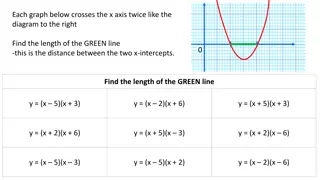Determining Linearity of Functions Through Graphs, Tables, and Equations
Students learn to distinguish between linear and nonlinear functions by examining graphs, tables, and equations. Linear functions exhibit constant rates of change, represented by straight lines, while nonlinear functions lack a constant rate of change, leading to curved or non-linear graph shapes. By analyzing the relationships between variables in different formats, students can confidently determine the linearity of functions.
Download Presentation

Please find below an Image/Link to download the presentation.
The content on the website is provided AS IS for your information and personal use only. It may not be sold, licensed, or shared on other websites without obtaining consent from the author.If you encounter any issues during the download, it is possible that the publisher has removed the file from their server.
You are allowed to download the files provided on this website for personal or commercial use, subject to the condition that they are used lawfully. All files are the property of their respective owners.
The content on the website is provided AS IS for your information and personal use only. It may not be sold, licensed, or shared on other websites without obtaining consent from the author.
E N D
Presentation Transcript
3.2 Linear Functions How can you determine whether a function is linear or nonlinear? 1. Students will be able to determine whether functions are linear functions by using graphs, tables and equations.
1. Students will be able to determine whether functions are linear functions by using graphs, tables and equations. A linear equation in two variables, x and y, is an equation that can be written in the form ? = ?? + ?, where m and b are constants (just numbers). Likewise, a linear function is a function whose graph is a non-vertical line. A linear function has a constant rate of change and can be represented by a linear equation in two variables. A nonlinear function does not have a constant rate of change and its graph is not a line.
1. Students will be able to determine whether functions are linear functions by using graphs, tables and equations. Does the graph represent a linear or nonlinear function? Explain. The function is nonlinear. The function is linear. Because the graph is not a line. Because the graph is a line.
1. Students will be able to determine whether functions are linear functions by using graphs, tables and equations. Does the table represent a linear or nonlinear function? Explain. A linear function has a constant rate of change +3 +3 +3 As x increases by 3, y decreases by 6. x y 3 6 9 12 18 The rate of change is constant for both x and y. 36 30 24 -6 -6 -6 The function is linear.
1. Students will be able to determine whether functions are linear functions by using graphs, tables and equations. Does the table represent a linear or nonlinear function? Explain. A linear function has a constant rate of change +2 +2 +2 As x increases by 2, y increases by different amounts. x y 1 2 3 9 5 7 20 35 The rate of change is not constant for both x and y. +7 +11 +15 The function is nonlinear.
You try!! 1. Students will be able to determine whether functions are linear functions by using graphs, tables and equations. Does the graph represent a linear or nonlinear function? Explain. The function is linear. The function is nonlinear. Because the graph is a line. Because the graph is not a line.
You try!! 1. Students will be able to determine whether functions are linear functions by using graphs, tables and equations. Does the table represent a linear or nonlinear function? Explain. A linear function has a constant rate of change +1 +1 +1 As x increases by 1, y increases by 2. x y 0 3 1 5 2 7 3 9 The rate of change is constant for both x and y. +2 +2 +2 The function is linear.
You try!! 1. Students will be able to determine whether functions are linear functions by using graphs, tables and equations. Does the table represent a linear or nonlinear function? Explain. A linear function has a constant rate of change +1 +1 +1 As x increases by 1, y decreases by different amounts. X y 1 2 8 3 4 4 2 16 The rate of change is not constant for both x and y. -8 -4 -2 The function is nonlinear.
1. Students will be able to determine whether functions are linear functions by using graphs, tables and equations. Which of the following equations represent linear functions? Explain. A linear function can be written in the form ? = ?? + ?, where m and b are constants (just numbers). ?, ? = 3?, ? =2 ?, ? = 6(? 1), and ?2 ? = 0 ? = 3.8, ? = ?, ? = 3?, ? =2 You cannot rewrite the equations ? = ?2 ? = 0 in the form ? = ?? + ?. So these equations cannot represent linear functions. ?, and You can rewrite the equation ? = 3.8 as ? = 0? + 3.8 You can rewrite the equation ? = 6(? 1) as ? = 6? 6 So these equations represent linear functions.
You try!! 1. Students will be able to determine whether functions are linear functions by using graphs, tables and equations. Does the equation represent a linear or nonlinear function? Explain. A linear function can be written in the form ? = ?? + ?. ? = 5 ?2 ? =3? ? = ? + 9 5 You can rewrite the equation as ? = 1? + 9 You can rewrite the equation as ? =3 You cannot rewrite the equation as ? = ?? + ? 5? + 0 Equation is a nonlinear function. Equation represents a linear function. Equation represents a linear function.
So lets review! What have we covered so far? 1. Students will be able to determine whether functions are linear functions by using graphs, tables and equations. In a graphit looks like a Line In a table we look for what? A constant rate of change in both x and y values. In equations we need to be able to do what? Write the equation in the form of ? = ?? + ?







